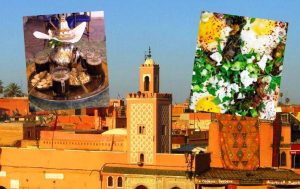With its open arms and white colour profile it transmits serenity. Christ the Redeemer, one of the largest and most famous statues in the world, is the symbol of Rio de Janeiro.
Located on the top of Mount Corcovado, 710 meters above sea level, it is visible from the entire Guanabará bay and overlooks the Brazilian city of Rio De Janeiro. The proposal to dedicate a colossal statue in the city of Rio, then the capital of Brazil, resulted from a petition signed by twenty thousand cultural personalities immediately after the First World War.
The aim was to testify that the Catholic faith was still alive and popular in the country. The engineer Heitor da Silva Costa was entrusted with the design and initially designed a statue of Christ flanked by a large cross and with a globe held in one hand and a cross in the other. But then, in collaboration with the artist Carlos Oswald, he developed the more original idea of representing Jesus with his arms wide open to form the image of the cross itself.
The definitive design was entrusted to the French sculptor Paul Landowski who outlined the figure of Christ, in particular the face and the drapery of the tunic, with art deco lines, the style in vogue at the time.
The figure is facing East so that, as the engineer da Silva Costa explained, “The statue of the Divine Savior will be the first image to emerge from the darkness and receive the greeting of the sun which, after surrounding it with its radiant brightness, at the sunset will form over his head a halo worthy of the man-God.”
After a popular fundraising campaign, in which thousands of Brazilian Catholics participated, the construction site was opened in 1926. The sculpture has colossal dimensions because it had to be visible from the centre of Rio, which is 4 kilometres away as the crow flies. It is 38 meters high (30 without the pedestal) and its arms are wide open in an embrace spanning 28 metres.
The head and hands measure over three meters. The structure is made up of a reinforced concrete frame covered in turn with cement, shaped like the plaster models that were prepared in France by Landowski. Inside, a system of stairs and tunnels allows you to reach the head and arms to facilitate maintenance.
However, the engineer da Silva Costa was not satisfied with the aesthetic result of the concrete. And so, he had the idea of covering the entire statue with a mosaic of stone triangles measuring approximately 34 centimetres per side. A very effective solution, which guarantees greater resistance to atmospheric agents and a pleasant light effect.
The installation of the enormous quantity of pedra sabão tiles, glued onto a linen canvas immersed in cement, was carried out by a team of women volunteers from the parishes of Rio. Many of them entrusted their petitions to the Lord by writing the names of their loved ones and their prayers on the back of the cards.
The inauguration of the Christ the Redeemer statue took place on 12 October 1931. At the solemn ceremony, the switching on of the lights was by command of the Italian scientist Guglielmo Marconi through a radio signal sent from Rome via the intercontinental transmission station built by the Nobel Prize winner near the city of Pisa.
Despite the careful design, the Redeemer statue has a chronic problem: due to its location, is often struck by lightning. Also, for this reason, in 2010, it was the subject of a complex restoration. It is visited every year by three million people who ascend using the adventurous Corcovado train and the 222-step stairs.
From the terrace around the pedestal, you can enjoy a more unique than rare panorama: the unmistakable profile of the Maracanã stadium, the beaches of Rio surmounted by the monolithic block of the Sugar Loaf and the Atlantic Ocean which forms a series of bays around the Carioca city. Without forgetting all the contradictions of the megalopolis with its skyscrapers that rise not far from the favelas.
In 2013, during World Youth Day in Rio, Pope Francis, not far from Christ the Redeemer, invited young people to go into the world to announce to everyone that “Jesus Christ is the Lord of life and history.” Precisely the message that the statue of Christ the Redeemer has continued to convey to those who have been raising their gaze to it for almost a century. (Illustration:Pixabay) – (Paolo Rappellino/Credere)







